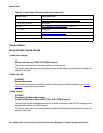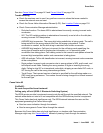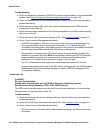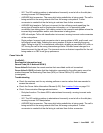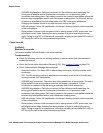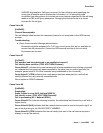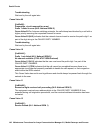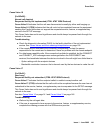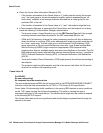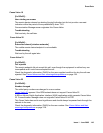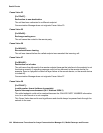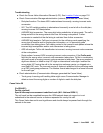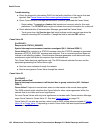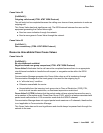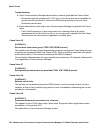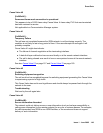
Denial Events
142 Maintenance Procedures for Avaya Communication Manager 3.0, Media Gateways and Servers
● Check the Cause Value Information Element (LOC).
- If the location information of the Cause Value is 4, “public network serving the remote
user”, the trunk group to the remote endpoint location might be experiencing an “all
trunks busy” condition or not enough channels allocated into a virtual group for the
particular NSF of the call.
- If the location information of the Cause Value is 0, “user”, the endpoint might be busy.
● If Communication Manager is generating this Cause Value, and the endpoint is not busy,
check the following Communication Manager administration.
- Trunk group screen: Usage Allocation is y on the CBC Service Type field. Not enough
incoming channels have been allocated for the NSF associated with this call.
- VDNs and Call vectoring: Analyze the vector processing and the call flow to determine
where the failure is occurring. VDN vector administration might incorrectly send the call
to a “busy” vector step. The call might go to a skill/Automatic Call Distribution (ACD)
group queue that is full and cannot accept any more calls. Look Ahead Interflow/Best
Service Routing (LAI/BSR) might receive an inappropriate ISDN response while
checking other sites for available agents and return busy feedback to the caller. The LAI/
BSR attempt might interact with the public network features Egress on busy – overflow to
POTS, Alternate Destination Routing (ADR), or Alternate Destination Call Redirection
(ADCR).
- Trunk and/or station Class of Restriction (COR) might prevent the call from terminating at
the endpoint.
- The endpoint might be call forwarded, and this is the second call within the 30-second
time limit on a station call-forwarding a call.
Cause Value 18
[0x12/0x92] -
No user responding/
No response from the remote device
The remote device/endpoint/PBX did not respond with an ALERTING/PROGRESS/CONNECT
indication within the time administered in the T303 or T310 timers Q.931 specification.
Cause Value 18 indicates high traffic conditions in the serving ISDN network or noisy conditions
on the T1/E1 span carrying the d-channel messaging. The noise is causing the loss of
messages being sent to the remote device. The remote device might also be unable to respond
to the incoming SETUP request.
This Cause Value has end-to-end significance and should always be passed back through the
network to the user.



